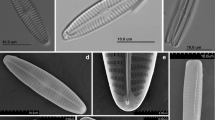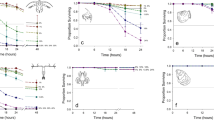Abstract
Fitchburg, Massachusetts sanitary landfill leachate was subjected to toxicity tests using: fathead minnows (Pimephales promelas), zooplankton (Daphnia magna), green algae (Selenastrum capricornutum) and aerobic luminescent bacteria (Photobacterium phosphorium). The leachate was highly toxic to the test bacteria, moderately toxic to daphnids, and slightly toxic to fathead minnows. Algal cells, unable to grow at the 10-percent leachate exposure level, recovered after centrifugation and reinnocuation into algal nutrient medium. Low-flow summer hydrological data indicated that the leachate contributed about 7% to the total flow of the receiving stream, Flagg Brook, and about 0.6% to Sawmill Pond water located further downstream from the leachate outfall. These data, together with observed toxicity values for the test organisms, indicate that the leachate concentration in Flagg Brook impacts the diversity of aquatic life in this system, but may be less severe in Sawmill Pond where increased dilution results in leachate levels below the acutely toxic level. The considerable variation between toxicity test results obtained with the four test organisms, demonstrates the importance of conducting several such toxicity tests using organisms from different trophic levels, to assess the potential impact of a pollutant discharge on an aquatic ecosystem.
Similar content being viewed by others
References
Alexander HC, McCarty WM, Bartlett EA (1978) Toxicity of perchloroethylene, trichloroethylene, 1,1,1 trichloroethane, and methylene chloride to fathead minnows. Bull Environ Contam Toxicol 20:344–352
Amelung M (1981) Effects of dissolved iron compounds on developing eggs and larvae of salmo gairdneri. Arch. Fisiherwiss (Ger) 32:77–87
American Society for Testing and Materials (1981) Annual book of ASTM Standards, Part 31 Water. Philadelphia 1512 pp
Beckman Instruments Inc (1982) Microtox™ System Operating Manual Analyzer Model 2055, Beckman Instructions 015-555879, Microbics Operation, Carlsbad CA, 59 pp
Biesinger K, Christensen G (1972) Effects of various metals on survival, growth, reproduction, and metabolism ofD. magna. J Fisheries Research Board of Canada 29:12 1691–1700
Brackley RA, Hansen BP (1977) Water resources of the Nashua and Shouegan River basins Massachusetts. Department of the Interior, United States Geological Survey, Hydrologic Investigation, Atlas HA-276
Broderius S, Smith LL, Lind DT (1977) Relative toxicity of free cyanide and dissolved sulfide forms to the fathead minnow. J Fish Res Board Can 34:2323–2332
Broderius S, Smith L (1979) Lethal and sublethal effects of binary mixtures of cyanide and hexavalent chromium zinc or ammonia to the fathead minnow and rainbow trout. J Fish Res Board Can 36:164–172
Cameron RD, Koch FA (1980) Toxicity of landfill leachates. J Water Pollut Control Fed 52:760–768
Curtis CA, Lima A, Lozano S, Veith G (1981) An evaluation of a bacterial bioluminescence bioassay as a method for predicting acute toxicity of organic chemicals to fish. Center for Lake Superior Environmental Studies, Center Series, No. 42 University of Wisconsin, Madison, 18 pp
DeGraeve GM, Overcast RL, Bergman HL (1980) Toxicity of underground coal gasification condenser water and selected constituents to aquatic biota. Arch Environ Contam Toxicol 9:543–555
Devlin EW, Brammer JD, Puyear RL (1982) Acute toxicity to toluene to three age groups of fathead minnows. Bull Environ Contam Toxicol 29:12–17
Judy R, Davies P (1979) Effects of calcium addition as Ca(NO3)2 on zinc toxicity to fathead minnows. Bull Environ Contam Toxicol 22:88–94
LeBlanc GA (1980) Acute toxicity of priority pollutants to water flea (Daphnia magna). Bull Environ Contam Toxicol 24:684–671
Lebsack ME, Anderson AD, DeGraeve GM, Bergman HL (1981) Comparison of bacterial luminescence and fish bioassay results for fossil-fuel process waters and phenolic constituents. Proceedings of the Fourth Annual Symposium on Aquatic Toxicology-American Society for Testing and Materials, Philadelphia, Pennsylvania: 348–358
Massachusetts Division of Water Pollution Control (1980, 1981) Unpublished data Water Resources Commission, Water Quality and Research Section, P.O. Box 545, Westbor-ough, MA
Mayer FL, Mehrle PM, Jr., Dwyer WP (1977) Toxaphene: Chronic toxicity to fathead minnows and channel catfish. United States Environmental Protection Agency EPA-600-77-069, Duluth, MN, 50 pp
McBride TP, Donaldson EM, Derksen G (1979) Toxicology of landfill leachate to underyearling rainbow trout (Salmo gairdneri). Bull Environ Contam and Toxicol 23:806–813
Miller WE, Greene JC, Shiroyama T, Merwin E (1973) The use of algal assays to determine effects of waste discharges in the Spokane River system. Proceeding: Biostimulation and nutrient assessment workshop. Corvallis, Oregon October 16-18, United States Environmental Protection Agency, ERA 660-75-034: 113–131
Miller WE, Green JC, Shiroyama T (1978) TheSelenastrum capricornutum Printz algal assay bottle test: experiment design, application, and data interpretation protocol. United States Environmental Protection Agency, 600/9-78-018 Office of Research and Development, Corvallis, OR, 126 pp
Parkhurst B, Bradshaw AS, Forte JL, Wright GP (1979) An evaluation of the acute toxicity to aquatic biota of a coal conversion effluent and its major components. Bull Environ Contam Toxicol 23:349–356
Peltier W (1978) Methods for measuring the acute toxicity of effluents to aquatic organisms. United States Environmental Protection Agency, EPA-60014-78-012 Environmental Monitoring and Support Laboratory, Cincinnati, OH, 52 pp
Pickering Q, Brungs W, Gast M (1977) Effect of exposure time and copper concentration on reproduction of fathead minnow. Water Res (G.B.) 11:1079–1083
Polprasert C, Carlson DA (1978) Some public health aspects of leachate from landfill. In: Duano E, Logani BN, Thanh NC (eds) Water pollution control in developing countries. Proceedings of the International Conference, Bangkok, Thailand, Pergamon Press, New York, 729–734
Snarski V, Olson G (1982) Chronic toxicity and bioaccumulation of mercuric chloride in the fathead minnow. Aquat Toxicol 2:143–156
Strickland JDH, Parsons TP (1972) A practical handbook of sea-water analysis. Fisheries Research Board of Canada, Ottawa, Canada, 310 pp
United States Environmental Protection Agency (1979) Further evaluation of the Microtox toxicity test system. US Environmental Protection Agency. Ecology Branch. Surveillance and Analysis Division. Athens, GA, 5 pp
-United States Environmental Protection Agency (1978a) Halomethanes Ambient Water Quality Criteria. NTIS PB 296797 Criteria and Standards Division, Washington, DC, 150 pp
- (1978b) Toluene Ambient Water Quality Criteria. NTIS PB 296805 Criteria and Standards Division, Washington, DC, 100 pp
- (1978c) Ethylbenzene Ambient Water Quality Criteria. NTIS PB 296784 Criteria and Standards Division, Washington, DC, 54 pp
- (1978d) Toxaphene Ambient Water Quality Criteria. NTIS PB 296806 Criteria and Standards Division, Washington, DC, 119 pp
- (1979) Methods for chemical analysis of water and wastes (Metals). EPA-600/4-79-020 Environmental monitoring and support laboratory, Cincinnati, OH 200.0-289.2
United States Federal Register (1979) Proposed Rules Methods 608 (Pesticides) and 624 (Volatile Organics) 44:233 Monday, December. 3:69501-69509 and 69532-69539
United States Geological Survey (1973) Water resources data for Massachusetts, New Hampshire, Rhode Island, Vermont. Department of the Interior, United States Geological Survey, Washington, DC, 433 pp
Weber CI (1980) Effluent toxicity screening test usingDaphnia and mysid shrimp. EPA/4-81-000 United States Environmental Protection Agency, Cincinnati, OH, 48 pp
Wetzel RG (1975) Limnology. WB Saunders, Philadelphia, 743 pp
Author information
Authors and Affiliations
Rights and permissions
About this article
Cite this article
Plotkin, S., Ram, N.M. Multiple bioassays to assess the toxicity of a sanitary landfill leachate. Arch. Environ. Contam. Toxicol. 13, 197–206 (1984). https://doi.org/10.1007/BF01055877
Received:
Revised:
Issue Date:
DOI: https://doi.org/10.1007/BF01055877




